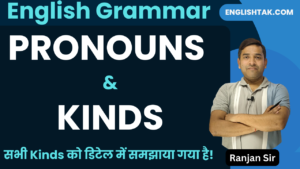![]()
Coordinating Conjunctions: FANBOYS
Table of Contents
In this blog post, I am sharing a complete guide to Coordinating Conjunctions: FANBOYS in English grammar, commonly remembered by the acronym FANBOYS. You will learn their definition, rules, and detailed usage, along with examples in both English and Hindi for better understanding.
Whether you’re a student preparing for exams, a teacher, or someone looking to strengthen your grammar skills, this post will help you master how to correctly use coordinating conjunctions.
We’ll explore:
- 📘 What are Coordinating Conjunctions?
- 📖 The FANBOYS acronym explained
- ✅ Rules for using them correctly
- ✨ Sentence examples in English and Hindi
- 🧠 Common mistakes to avoid
Definition of Coordinating Conjunctions (in English):
Coordinating conjunctions are words that connect two or more words, phrases, or independent clauses that are grammatically equal or similar in structure. They help to join ideas of equal importance without changing the meaning of the individual parts.
There are seven coordinating conjunctions in English, remembered by the acronym FANBOYS:
👉 For, And, Nor, But, Or, Yet, So.
These conjunctions do not make one clause dependent on the other, which means the parts they join can stand alone as complete sentences too.
Coordinating conjunctions वे शब्द होते हैं जो दो या दो से अधिक समान प्रकार के शब्दों, वाक्यांशों या स्वतंत्र उपवाक्यों को जोड़ते हैं। ये समान स्तर के विचारों को एक साथ जोड़ते हैं।
अर्थात: इन conjunctions से जुड़े वाक्य या विचार एक-दूसरे पर निर्भर नहीं होते, बल्कि स्वतंत्र रूप से भी अपना अर्थ स्पष्ट कर सकते हैं।
English में कुल 7 Coordinating Conjunctions होते हैं, जिन्हें याद रखने का तरीका है – FANBOYS:
👉 For (क्योंकि), And (और), Nor (और नहीं), But (लेकिन), Or (या), Yet (फिर भी), So (इसलिए)
🔹 Examples of Equal Structures: Coordinating Conjunctions: FANBOYS
- Joining Two Words:
✅ He is smart and funny.
(joins two adjectives) - Joining Two Phrases Phrases:
✅ She likes playing guitar and singing songs.
(joins two verb phrases) - Joining Two Clauses Clauses:
✅ I went to the market, but I forgot to buy milk.
(joins two independent clauses)
Coordinating Conjunctions Rules and Uses
1. AND
Meaning (in detail):
‘And’ is used to add one idea to another or connect similar thoughts or actions. It joins items that go together.
Hindi: और (जब दो या अधिक विचार या वस्तुएँ एक साथ जुड़ी हों)
Examples:
- She bought a pen and a notebook.
— उसने एक पेन और एक नोटबुक खरीदी। - He is kind and helpful.
— वह दयालु और मददगार है। - We went to the park and played cricket.
— हम पार्क गए और क्रिकेट खेला। - I called him and he answered immediately.
— मैंने उसे फोन किया और उसने तुरंत जवाब दिया। - The movie was long and boring.
— फिल्म लंबी और बोरिंग थी।
2. BUT
Meaning (in detail):
‘But’ is used to show contrast between two ideas. It introduces something opposite or unexpected.
Hindi: लेकिन, परंतु (जब दो विपरीत बातें कही जाती हैं)
Examples:
- She is rich but unhappy.
वह अमीर है लेकिन दुखी है। - I wanted to go out, but it was raining.
मैं बाहर जाना चाहता था, लेकिन बारिश हो रही थी। - He studied hard, but failed the test.
उसने कड़ी मेहनत की, लेकिन परीक्षा में फेल हो गया। - They tried, but didn’t succeed.
उन्होंने कोशिश की, लेकिन सफल नहीं हो पाए। - I like coffee but not tea.
मुझे कॉफी पसंद है लेकिन चाय नहीं।
3. OR
Meaning (in detail):
‘Or’ is used to show a choice or alternative between two or more options.
Hindi: या (विकल्प या चुनाव बताने के लिए)
Examples:
- Do you want tea or coffee?
क्या आप चाय या कॉफी चाहेंगे? - We can go by car or by bus.
हम कार या बस से जा सकते हैं। - Is your name Rahul or Raj?
तुम्हारा नाम राहुल है या राज? - Eat now or you’ll be late.
अभी खा लो या देर हो जाएगी। - Should I wait here or come back later?
क्या मैं यहीं रुकूं या बाद में आऊं?
4. SO
Meaning (in detail):
‘So’ is used to show the result or consequence of an action or situation.
Hindi: इसलिए (किसी कार्य का परिणाम बताने के लिए)
Examples:
- I was tired, so I went to bed early.
मैं थक गया था, इसलिए जल्दी सो गया। - It was hot, so we turned on the fan.
गर्मी थी, इसलिए हमने पंखा चलाया। - He studied hard, so he passed.
उसने मेहनत की, इसलिए वह पास हुआ। - She missed the bus, so she walked.
वह बस से चूक गई, इसलिए पैदल गई। - He didn’t come, so I called him.
वह नहीं आया, इसलिए मैंने उसे फोन किया।
5. YET
Meaning (in detail):
‘Yet’ is used to show contrast like “but”, especially when the second idea is surprising or unexpected.
Hindi: फिर भी (जब अपेक्षा के विपरीत कुछ होता है)
Examples:
- It’s cold, yet he’s not wearing a jacket.
ठंड है, फिर भी वह जैकेट नहीं पहन रहा। - She is small, yet very strong.
वह छोटी है, फिर भी बहुत ताकतवर है। - I studied hard, yet I forgot the answers.
मैंने बहुत मेहनत की, फिर भी उत्तर भूल गया। - They were tired, yet continued working.
वे थक गए थे, फिर भी काम करते रहे। - He is rude, yet people like him.
वह बदतमीज़ है, फिर भी लोग उसे पसंद करते हैं।
6. FOR
Meaning (in detail):
‘For’ is used to give a reason for something (more formal than “because”).
Hindi: क्योंकि (कारण बताने के लिए, औपचारिक रूप)
Examples:
- I stayed home, for I was sick.
मैं घर पर रहा, क्योंकि मैं बीमार था। - She left early, for she had a meeting.
वह जल्दी चली गई, क्योंकि उसकी मीटिंग थी। - He was angry, for they lied to him.
वह नाराज़ था, क्योंकि उन्होंने उससे झूठ बोला। - I took an umbrella, for it was cloudy.
मैंने छाता लिया, क्योंकि मौसम बादलों से भरा था। - She didn’t go, for she was not invited.
वह नहीं गई, क्योंकि उसे बुलाया नहीं गया था।
7. NOR
Meaning (in detail):
‘Nor’ is used to connect two negative ideas. It is often used with neither or after a negative clause.
Hindi: और नहीं, न ही (नकारात्मक विचार जोड़ने के लिए)
Examples:
- He didn’t come, nor did he call.
वह नहीं आया, और न ही उसने कॉल किया। - She doesn’t like tea, nor coffee.
उसे चाय पसंद नहीं है, और न ही कॉफी। - They didn’t speak, nor did they smile.
उन्होंने बात नहीं की, और न ही मुस्कराए। - He has no pen, nor any paper.
उसके पास न पेन है, और न ही कोई कागज़। - I don’t like horror movies, nor do I watch them.
मुझे हॉरर फिल्में पसंद नहीं हैं, और न ही मैं उन्हें देखता हूँ।
English Grammar Exercise
Conjunctions Definition and Kinds in English Grammar
Use of MUST in Modal Verbs in Hindi with Examples
Possessive Case in English Grammar
Simple Present Passive Voice 100 Examples
Should Have+V3 Could Have+V3 and Would Have+V3
Inversions All Rules in English
List of Conjunctions and Rules in English Grammar
Adverbs MCQ – Objective Question Answer






